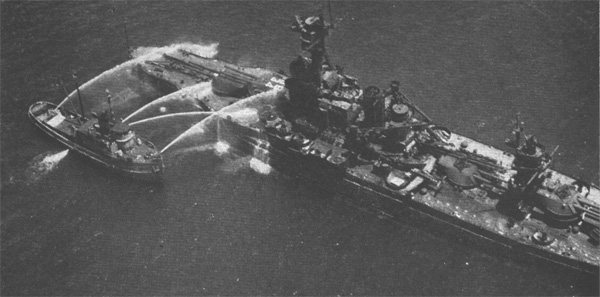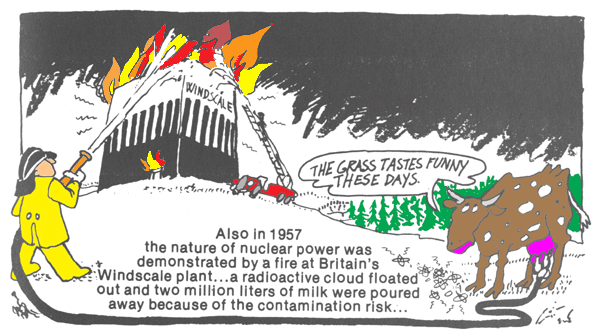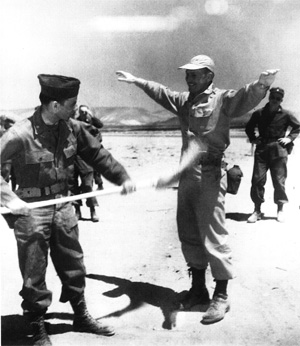 '
'Decontamination / Contamination: To poison a larger volume of the universe with a smaller volume of radioactive material.
Decontamination and Contamination are the same thing, just viewed from different perspectives. Every time you decontaminate one thing, you contaminate something else.
Usually, decontamination is done with water. The process has remained essentially unchanged since its inception. For example, below a photo from a 1946 U. S. Government book:
 '
'
The caption in the 1946 document describes the above procedure as "Decontamination Procedure, USS New York". It continues:
----------------------------------------------------------
A United States Navy fireboat washes down the decks of the battleship 'New York' with sea water shortly after the Baker Test. This procedure was carried out with many of the target ships prior to sending inspection parties aboard. High pressure firehose streams washed much radioactive material from the decks, making the initial reboardings after the test far less dangerous than they would otherwise have been. During the Test Baker explosion great quantities of radioactive water were thrown upon the ships, either by the great column tossed up or by the enormous waves. This innocent-appearing but radioactive water was such a hazard even after four days, that it was still unsafe for inspection parties to spend any useful length of time at the center of the target area.
-- Operation Crossroads: The Official Pictorial Record. Page 211. The Office of the Historian, Joint Task Force One. Wm. H. Wise & CO., Inc., New York, NY, 1946.
----------------------------------------------------------
Here is a photo from a 2002 National Geographic article on Nuclear Waste:

The caption in the 2002 National Geographic article describes the above procedure as "decontamination":
----------------------------------------------------------
Sealed head to toe, a technician at Savannah River Site, South Carolina, sprays water heated to 180 degrees F to decontaminate a cask emptied of spent fuel. His dosimeter records exposure to radiation, and he is checked every time he leaves the plant.
-- America's Nuclear Waste; National Geographic, July, 2002, Page 15.
----------------------------------------------------------
The major difference between these two procedures appears to be that in the 1946 procedure, the radioactive waste was dispersed directly into the ocean. In the 2002 procedure, the radioactive waste presumably will first go through a municipal sewage system or other water system before ultimately being discharged into the public waterways, and then into the oceans. Additional contamination occurs at each step.
----------------------------------------------------------
The cartoon shown below further illustrates the way these terms are interchangeable, as the same procedure as illustrated in both photographs above is used to get rid of unwanted contaminated milk:

-- The above cartoon is from The Anti-Nuclear Handbook, page 25, Pantheon Books, NY, 1978 (colorized just for the fun of it by this author).
Windscale, in England, is now known as Sellafield (many nuclear facilities change their names after they have severe accidents). For a look at the history of Sellafield, read: Mother Country by Marilynne Robinson.
----------------------------------------------------------
The photo below illustrates the "broom" method of decontamination, commonly used in the 1950's. This method actually releases radioactive material into the atmosphere, and has since been officially abandoned:

-- Above image is from: Atomic Audit: The Costs and Consequences of U.S. Nuclear Weapons Since 1940, Stephen I. Schwartz, Editor, from photo group following page 458, Brookings Institution Press, Washington, D.C., 1998.
----------------------------------------------------------
Copyright (c) 2002 by Russell D. Hoffman. All Rights Reserved